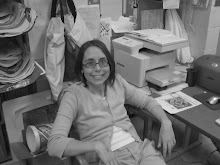In 1483 Raphael was born in Urbino. His father was a painter. He showed talent at a young age, apprenticing with master artist Perugino. He lived in Florence and was influenced by the work of contemporary artists Michelangelo and Leonardo. Pope Julius II and Pope Leo X commissioned him to paint. Julius II liked his work so much that he ordered all the by other artists removed from three of his Vatican apartments. Only Raphael was allowed to paint in these apartments, or stanza. (information from History of Art and What Great Paintings Say)
In one of the stanzas, the Stanza della Segnatura, Raphael painted the School of Athens.
 The School of Athens, c. 1511. Fresco; 500 x 770 cm. Stanza della Segnatura, Vatican City. (Image from Wikipedia)
The School of Athens, c. 1511. Fresco; 500 x 770 cm. Stanza della Segnatura, Vatican City. (Image from Wikipedia)
This painting is in the Stanza della Segnatura, named so because the supreme papal tribunal (or Signatura Curiae) met there. Pope Julius II wanted Raphael to paint a mixture of both Christian and Classical subjects in this room. Raphael's School of Athens illustrates several of the leading schools of ancient philosophical thought, including such well known figures as Plato, Aristotle, Socrates, and Euclid. Raphael represented some of these philosophers as his contemporaries. For example, Plato is actually an idealized portrait of fellow artist and Renaissance man Leonardo daVinci. Some say including Leonardo in this painting was Raphael's way of paying tribute to one of the great thinkers of his own time. At the far right of the fresco, Raphael's own self portrait peeks out towards the viewer, the figure in the black hat. Some art historians identify the man in white (who Raphael stands behind) as being Perugino, the master with whom Raphael apprenticed. (information from Art Across Time)
I chose to include this work in my collection because I appreciate both the humanist element in this work, and also the portraits of Raphael's contemporaries. I think this is an interesting work.
